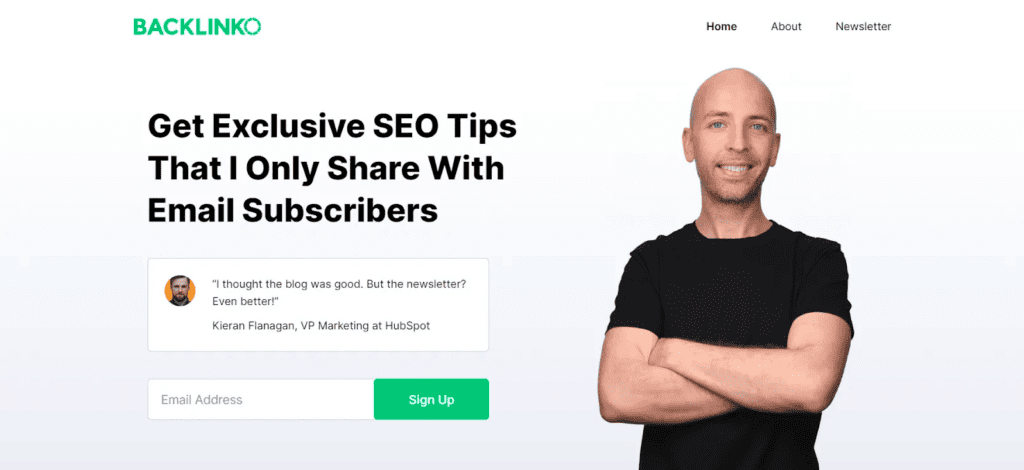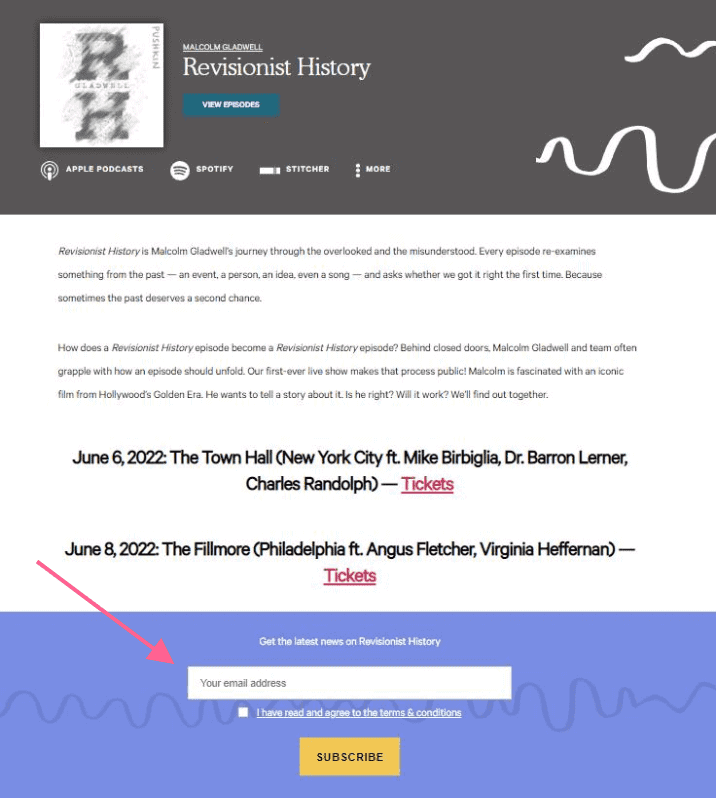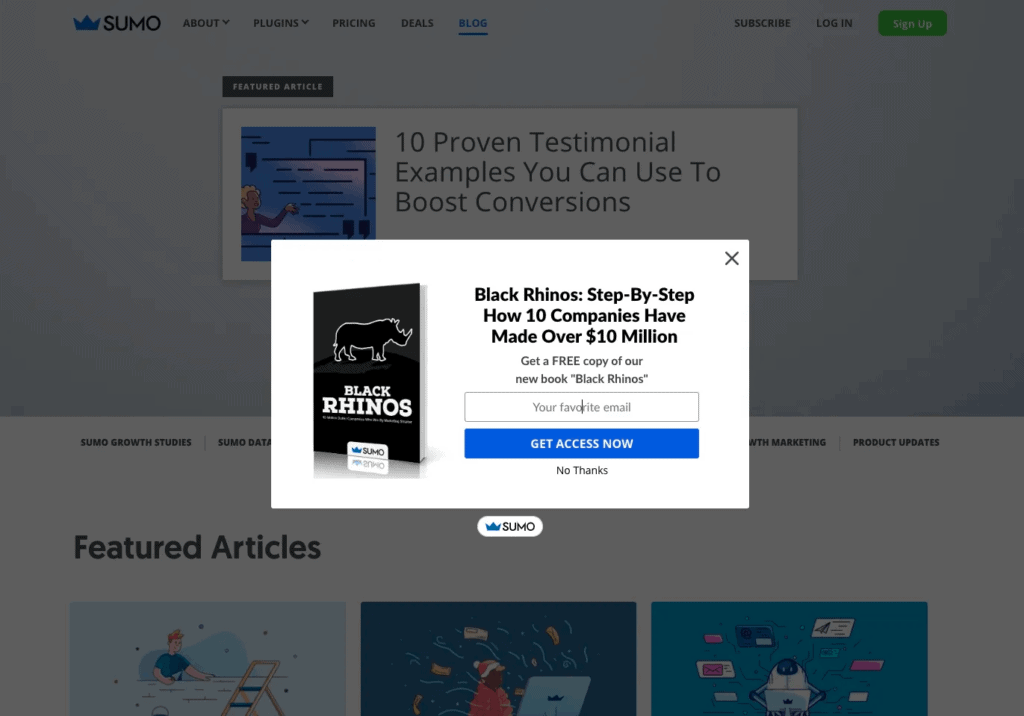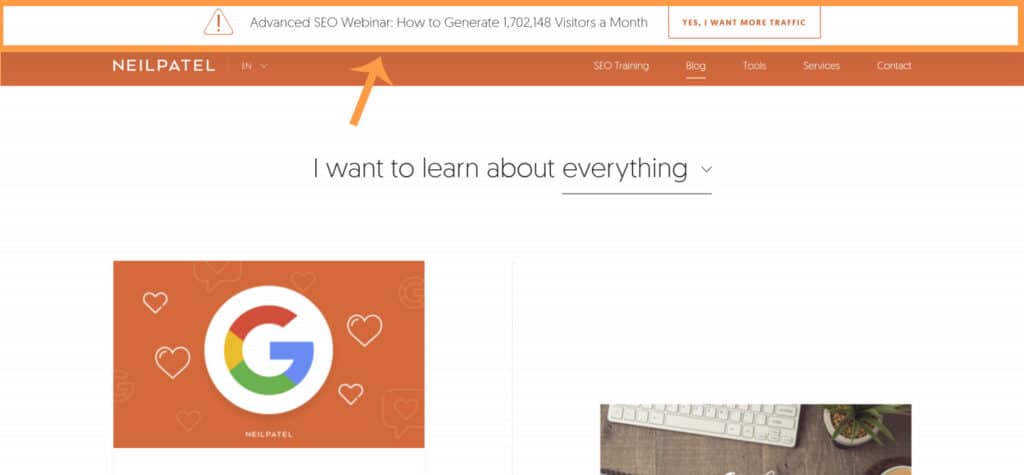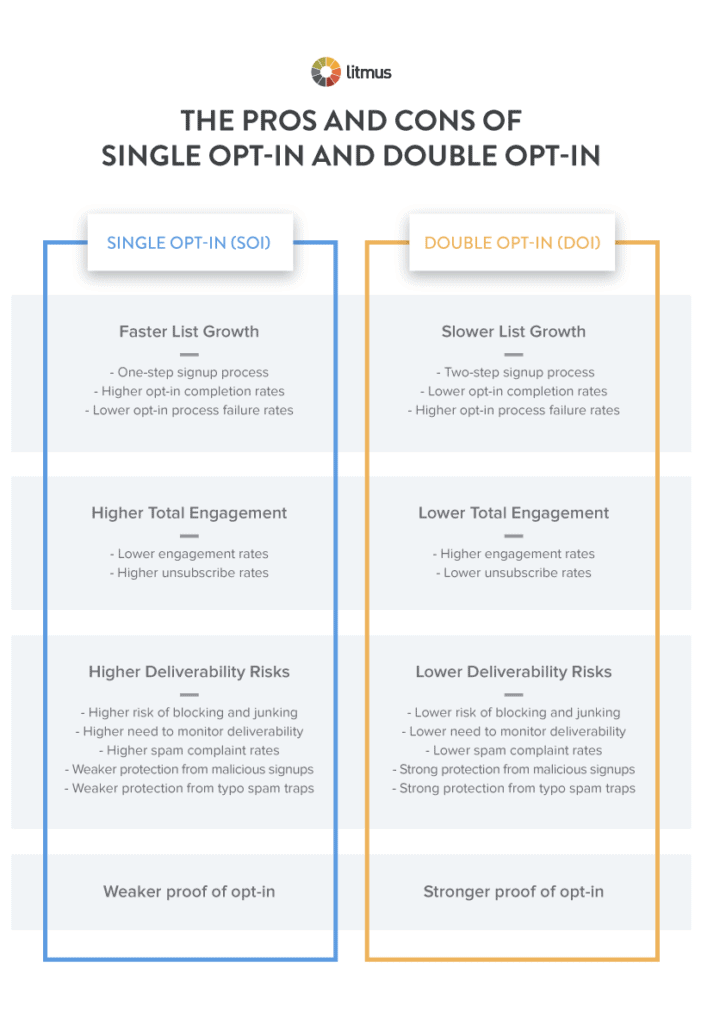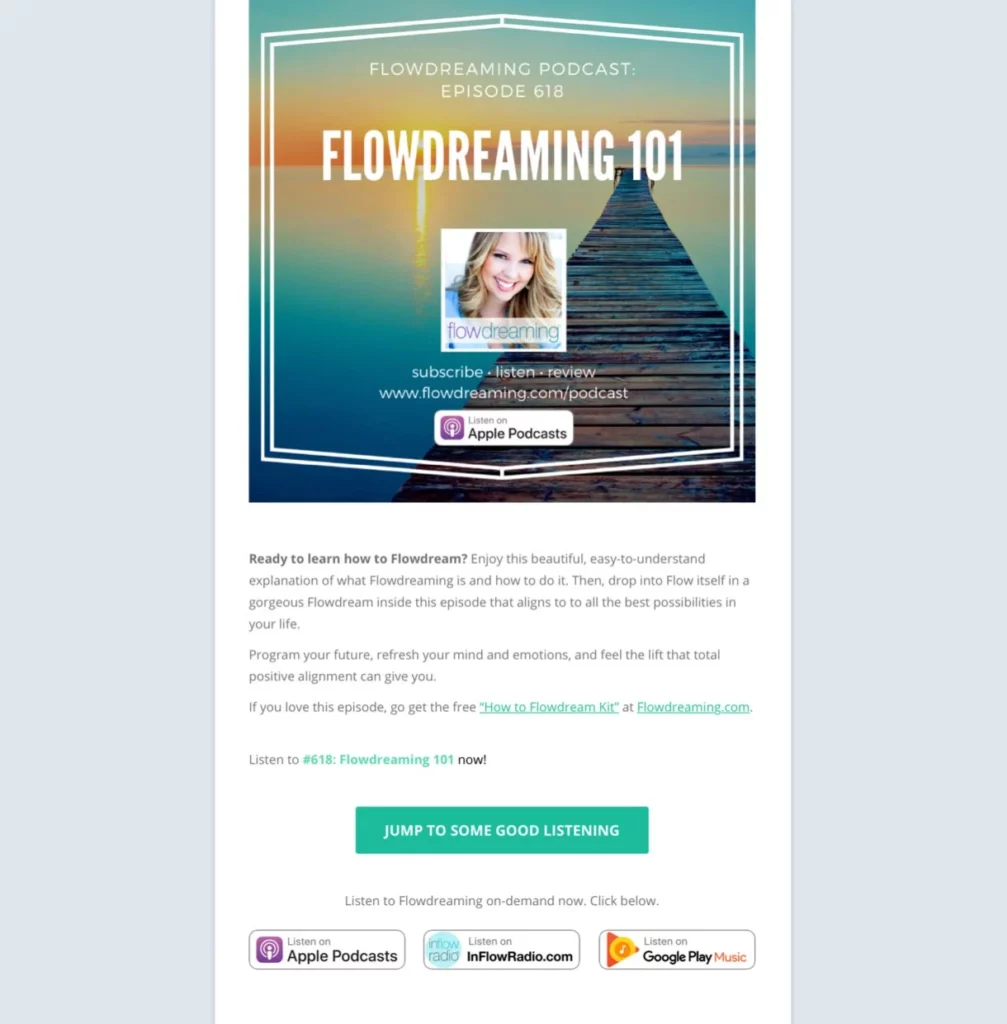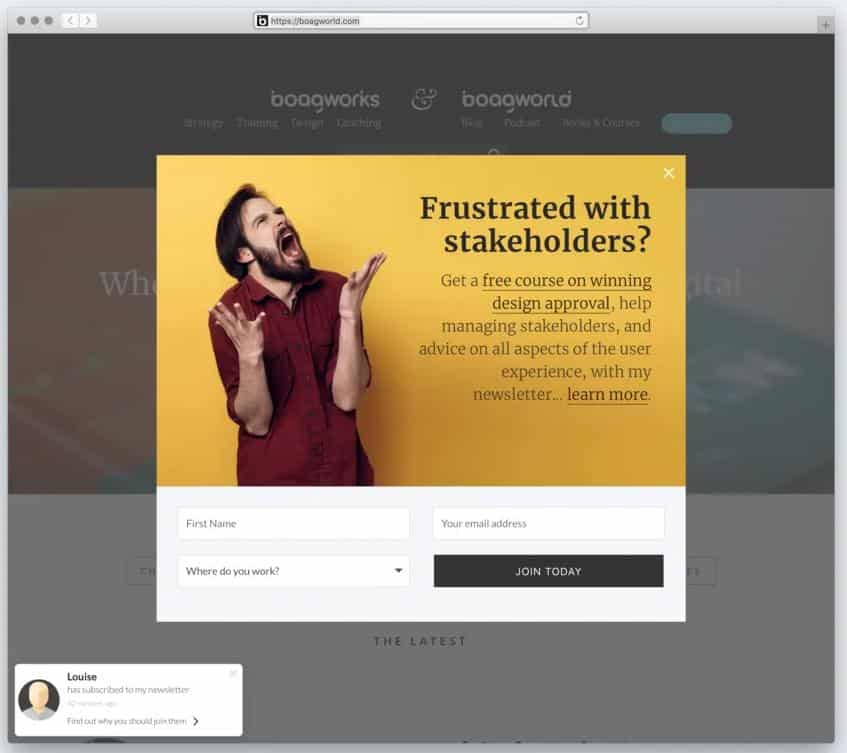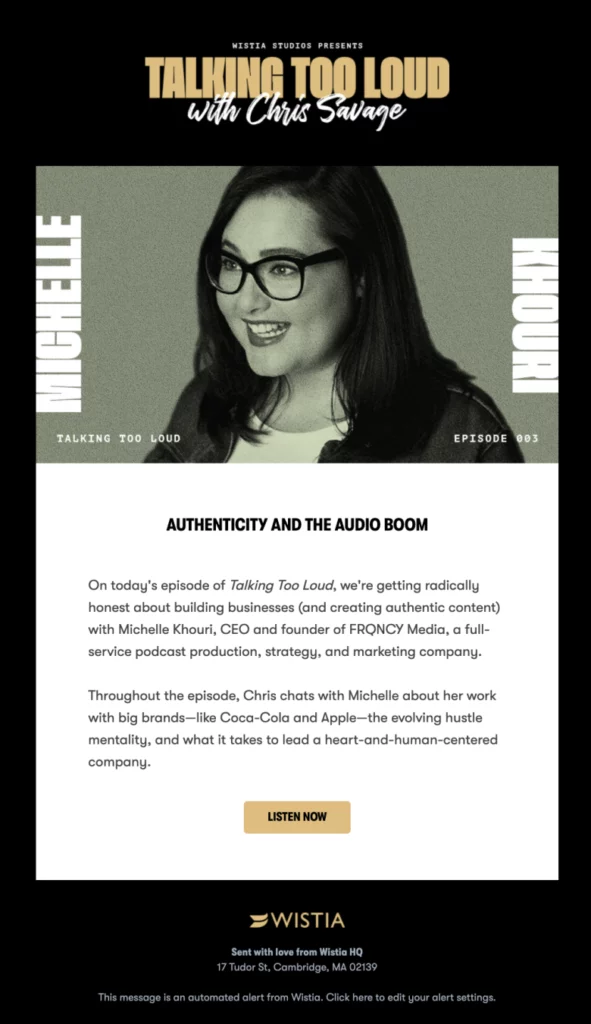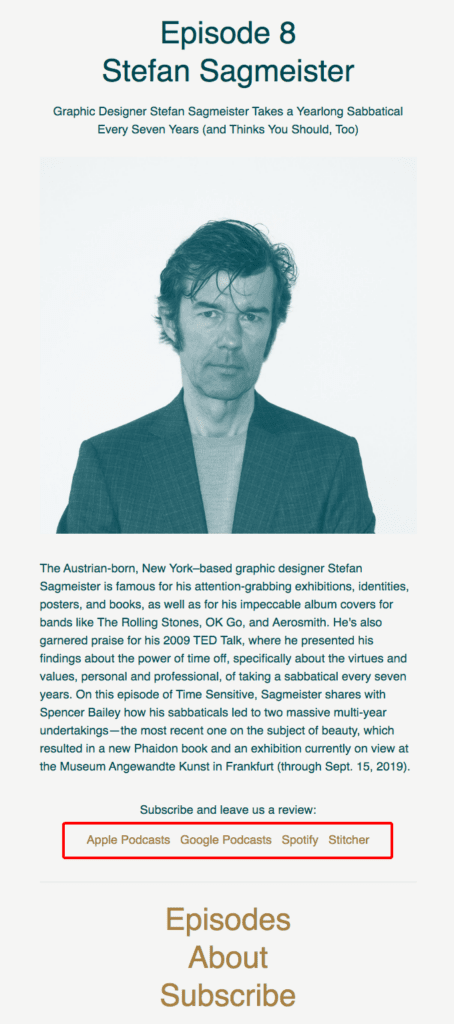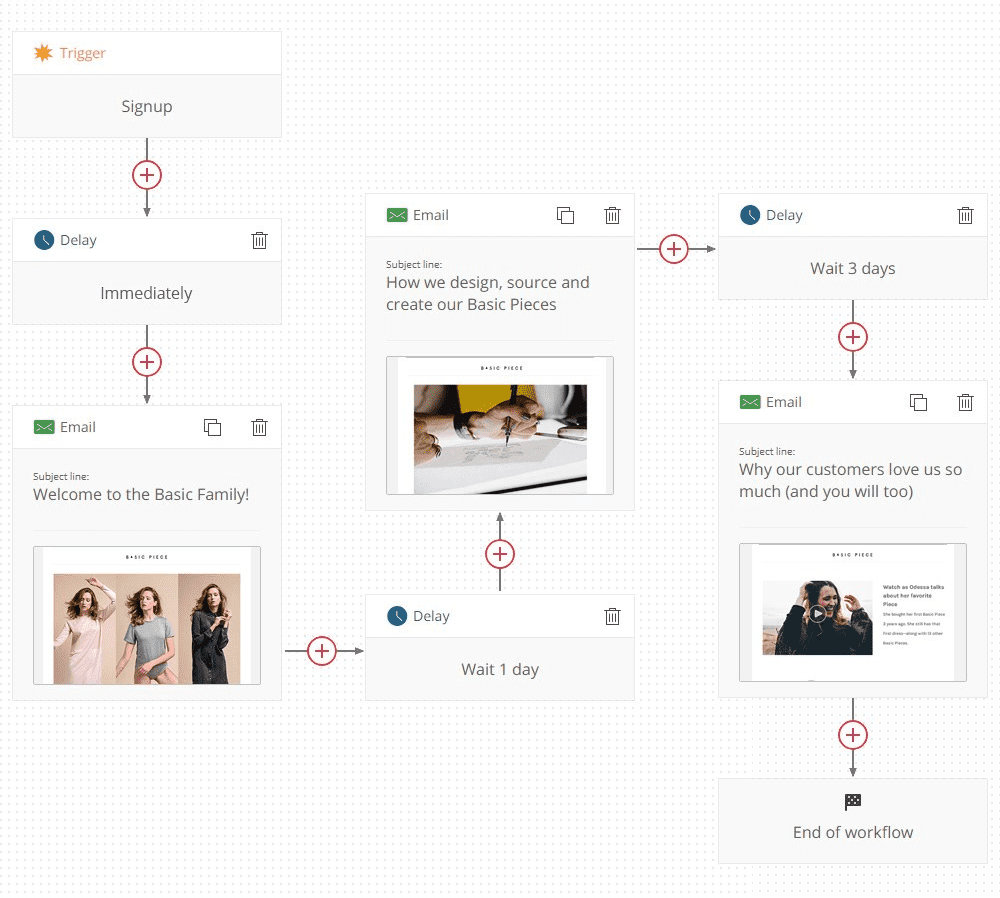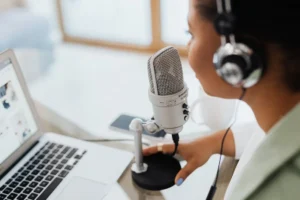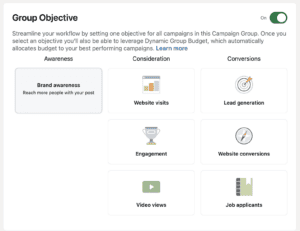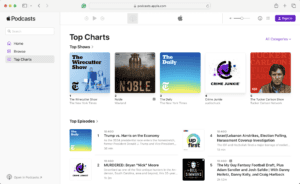Want to know how to build an email list for your podcast? Email marketing is a communication method that compliments nicely with podcasting. It gives you a way to send updates, notify about new episodes, tease upcoming episodes, ask for feedback, and engage your listeners in an intimate place.
Do people really like email? Absolutely. 70% of U.S. consumers prefer email for communicating with businesses. Emails give your audience the chance to consume your content at their own pace without feeling pressured to respond to notifications.
If you want to build a successful podcast brand, it’s important to take email marketing seriously. In this article, we explain everything you need to know about how to build an email list for your podcast.
Action
Read to start your own podcast? Learn the nitty-gritty details of starting your own show in our comprehensive guide. Learn how to start a podcast.
Why Podcasters Need an Email List
Before we talk about how to build an email list for your podcast, let’s talk about why you should bother. Here are the benefits of using email marketing with podcasting.
You own the communication channel
There are lots of tools and platforms you can use to communicate with your audience, but they are all owned by someone else. For instance, you might like to communicate with Twitter, but if Twitter decides to ban you one day, you would lose that link to your audience. Even your domain can be taken from you (if you behave especially poorly).
Email marketing doesn’t have this problem. You own your email list. If your email marketing platform bans you, changes policies, or goes out of business, you can still take your list to another provider without losing a single subscriber.
You control your message
One of the drawbacks of social media is that you can’t guarantee your message will reach your audience. This is because algorithms control the content that your followers see. Many social media posts are only seen by 10% or less of your followers.
Email marketing doesn’t have this challenge. There’s no ranking system involved. Whatever message you send will be received by your subscribers.
Personalize emails for each listener
Your average subscriber likely gets a lot of spam texts and emails. Personalizing your email allows you to create a much better and more intimate relationship with your listeners. With the right email marketing software, you’ll have the tools to personalize each subscriber’s experience using subscriber segmentation.
Low cost/high return
Email marketing is one of the least expensive digital marketing strategies. You can communicate with thousands of people for a few bucks a month.
Easy content creation
Once you build a template, emails are quick and easy to create. You won’t spend a lot of time drafting your messages. This means you can create lots of email content without adding too much to your workflow.
Communicate between episodes
There are probably a lot of things you want to say to your listeners between episodes, especially if you only publish new episodes monthly or in batches. Email marketing gives you a simple and effective way to communicate with your audience.
Grow your revenue
If you have a product to sell, such as a membership course, membership podcast, or private podcast, email marketing gives you opportunities to communicate the benefits of these products to your audience. These are also more opportunities to promote your sponsors, thereby increasing the value of those sponsorships.
Tip
Ready to grow your audience? Learn how to market your show in our complete guide: How to Promote a Podcast: The Ultimate Podcast Marketing Guide
Capturing Email Addresses on Your Site
In order to capture email addresses, you’ll need opt-in forms positioned throughout your podcast website. These forms simply ask subscribers for their name and email list (or just an email list if you want to be really minimal).
Where should you place forms throughout your site? You could embed opt-in forms to pages, sidebars, and your footer.
You could add opt-in forms to the end of blog posts and podcast posts.
You might use popup overlays to grab your site visitors’ attention.
Or you might add a notification bar, slide-out, or toaster popup to gently nudge them.
If you don’t have a dedicated website for your podcast, a landing page will suffice. A landing page is just a page that focuses on a singular goal – in this case, to get people to subscribe. There are plenty of landing page tools that don’t require a website or domain.
Double opt-in vs. single opt-in
You can configure them as single opt-in or double opt-in. A single opt-in form means when the submitter enters their email address, they are immediately placed on the list. They only have to opt-in one time.
A double opt-in form requires the form submitter to click a link in their email or text messages to confirm their subscription. This confirmation ensures that the owner of the inbox actually wants the email. It prevents people from subscribing on the behalf of other people and limits the ways bots and scammers can use your list.
Double opt-in is definitely safer, and some email marketing platforms require it, but there will always be a percentage of people who fail to click the confirmation email. They simply assume the original submission is sufficient. You’ll have to decide which method is right for you.
Our favorite email marketing tools
In order to build an email list, you need an email marketing tool to collect and find addresses and send messages to your subscribers. There are lots of options out there. Most of them are perfectly fine for your needs, but here are our favorites:
If you are new to email marketing, pretty much any email service provider will offer the features you need to start sending messages to your subscribers. Whichever platform you choose, make sure they offer sign up forms that you can embed throughout your website, a segmentation feature so you can send personalized content to your list, automations so you can create drip sequences, and analytics so you can measure the performance of your campaigns.
Grow Your Audience with Castos
Try Castos for free for 14 days. See how it helps you create great content and connect with your listeners.
Email Marketing Tips for Podcasters
If you’re going to engage in email marketing, you ought to do it well. Here are some email marketing for podcasters tips on how to build an email list to make your campaigns successful.
1. Send updates about new episodes
This tip should be obvious, but we didn’t want to leave it out. Whenever you release a new episode, it’s important to notify your subscribers by sending an email. This email doesn’t need to be complex, so it shouldn’t take long to create.
The email should include a brief description of the episode and a call to action that links to the page on your podcast website where they can listen to it and read your show notes and episode transcription. It’s also smart to include links to your show on some of the most popular podcast listening apps.
Here’s a pretty basic example. Notice how it gets right to the point. It tells you what the episode is about and provides a call-to-action to listen. Simple and effective.
2. Incentivize your listeners to sign up
In order to convince your listeners and website visitors to subscribe to your email list, it’s important to give them a good reason. There has to be a benefit for your audience to subscribe.
This incentive is called a lead magnet. It’s something valuable they can download, access, enjoy, or use that’s worth subscribing for. Lead magnets look different for every audience, but here are some common examples.
- Bonus episodes – Record special episodes that only your subscribers can access.
- Exclusive content – Beyond episodes, you might record behind-the-scenes audio, videos, or articles that are just for subscribers.
- Checklists – If you give “how to” advice, a checklist packs your knowledge into a small package. Ex: A fishing podcast might produce a packing checklist.
- Templates – You can help your audience create their own customized resources by giving them a template to get started.
- Worksheets – Help your audience solve their own problem by giving them a worksheet to fill out and work through the issue.
- Content upgrades – These are bonus pieces of content that enhance an existing piece of content. For instance, if you refer to Photoshop templates on your show, offering those exact templates in exchange for an email address is an upgrade. Think about how you can “upgrade” the content of each episode.
- Community access – Start your own community, but limit membership to subscribers.
This is a basic example of a lead magnet. By subscribing to the email list, you receive access to a free course about managing your stakeholders. This example also uses effective copy and imagery to entice website visitors to subscribe.
Action
Facebook is a powerful tool to build a community around your show. Learn more: Using Facebook Groups To Build A Podcast Community
3. Promote your online and offline events
If you host an online event (such as a webinar, a livestream, or a Twitter chat) or an offline event (such as a conference, mastermind, or or meet-and-greet), it’s a good idea to give your audience something “tangible” they can read about your event. Promote these events on your show, but also send an email they can keep with the dates and details. Include links in the email to add your event to their calendars.
4. Remind your listeners to subscribe
As a podcaster, you have an advantage that many email marketers lack: an existing audience. You can hit the ground running with email list growth by asking your listeners to subscribe to your show.
At some point during your show, ideally during the intro or outro, you should request that your audience visit your website and subscribe through one of your sign up forms. Make this easy for them by using a simple URL that they can remember, such as “domain.com/join.”
Most importantly, explain what they will get in return for subscribing to your email list. What kind of value will they get in their inbox? Ideally you want to say something like this:
“Make sure you don’t miss an episode by subscribing to our email list at domain.com/join. Each week, you will receive episode notifications, free guides, and bonus content.”
5. Give subscribers special access to you
People love to communicate with their favorite influencers and thought leaders. And since podcasting is a one-way medium, it’s smart to give your audience ways to communicate with you directly, but only in exchange for their email address.
Host special events for subscribers, like Q&As or round tables. You could publish the audio or keep them private.
6. Send lots of nurturing content
You may only produce a few episodes a month, but that shouldn’t limit the number of emails you send. Feel free to send lots of different kinds of content to your subscribers. For instance, you might share an interesting article you read, send surveys, promote an affiliate product, promote your other forms of content, or share news about your show.
If you lurch your subscribers with high value content over time, you will condition them to open your emails right away. This increases the chances that they engage with the emails you care about the most.
7. Keep your email content fairly short
Well it’s true that your subscribers want to hear from you, and then, that doesn’t mean they are willing to read hundreds of words of copy in each email.
For the best engagement, keep your written content short and concise. Mix in visuals and calls to action to break up the text. If you want to go deeper into a subject, publish it somewhere else and link to it from your email.
Notice how short and concise this email is. It’s a simple, but effective announcement. It only includes the brand’s logo, an image, the title of the episode, some supplementary text to entice readers, and a call-to-action.
8. Include links to listen in every email
Add links to your website and the major podcast listening apps to every email you send. These typically go in the footer. This ensures they always have direct access to your content. Through your contact. Plus, if they forward one of your emails to their friends, the new fan will have access as well.
9. Build automations
Email automations are pre-arranged emails (or sequences of emails) that start sending based on triggers. A trigger can be anything you like, such as behavior on your website, engagement with an email, the purchase of a product, or sign up through a form.
For example, a welcome series is the most popular email automation. You can create a series of emails that send automatically when someone joins your email list for the first time. Each email would be separated by a delay, usually a day or two. A welcome series gets the highest open rate of all of your emails because the subscriber is at their peak interest.
Here’s a visualization of how that looks in the backend of an email marketing platform:
Here’s an example of the structure of a common podcast newsletter email welcome series:
- Email 1: Thanks for joining. Here’s what my show is about…
- Email 2: Here are my most popular episodes.
- Email 3: Here is the team behind my podcast.
- Email 4: How you can help grow my podcast.
10. Give people a way to unsubscribe quickly
It’s important to give your subscribers a simple link that they can click to unsubscribe immediately. This is actually a requirement in many jurisdictions. Most email marketing software providers will add this automatically to your emails.
11. Leverage other audiences
A popular way for podcasters to market their shows is to appear as a guest on another show with a similar audience. Use these opportunities to encourage those listeners to subscribe to your email list. Make sure to mention the special value they would get from being a subscriber.
12. Reply to subscriber messages
Every so often, one of your subscribers will reply to your emails with a question or comment. Ignoring these will reflect very poorly on you. Use them as opportunities to create deeper connections with subscribers/listeners who care about you enough to type a message.
Going Forward with How to Build an Email List
Now that you understand the basics about how to build an email list for your podcast, we strongly recommend starting as soon as possible. The sooner you begin growing your list, the sooner you will enjoy the benefits of an engaged audience.
Have you built an email list for your show? What are your thoughts on how to build an email list?
